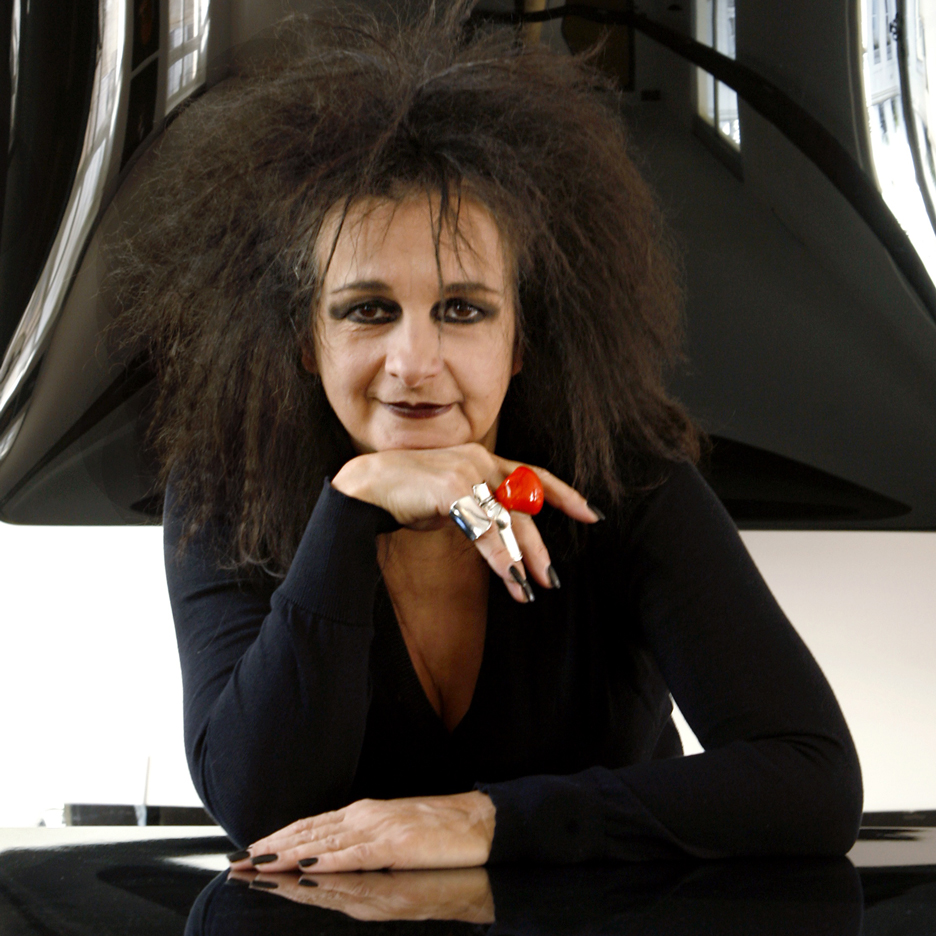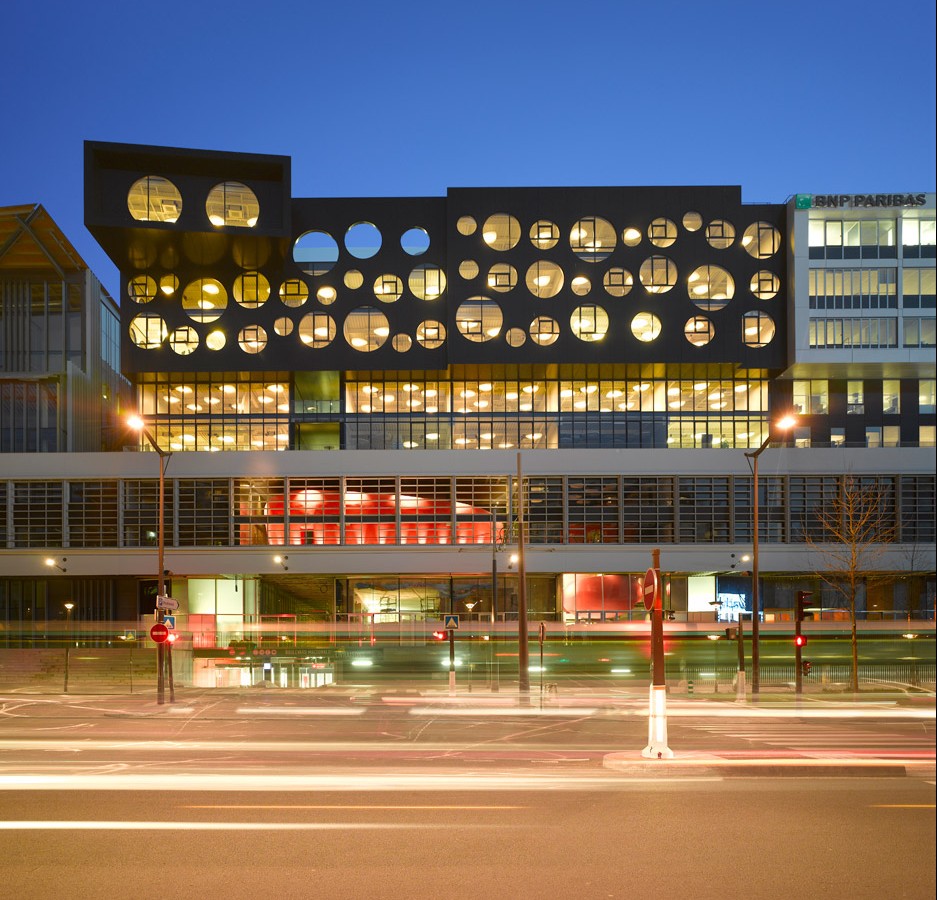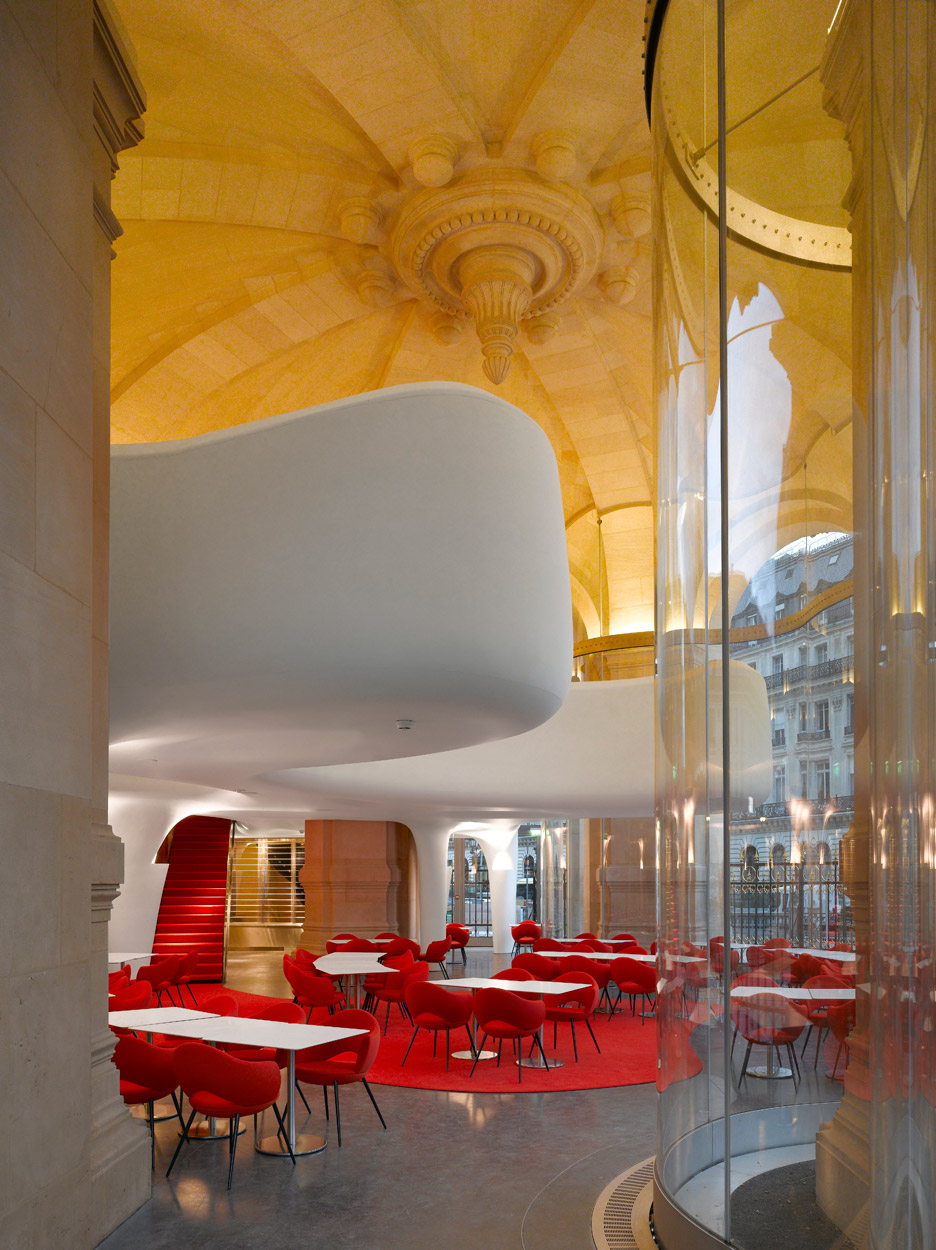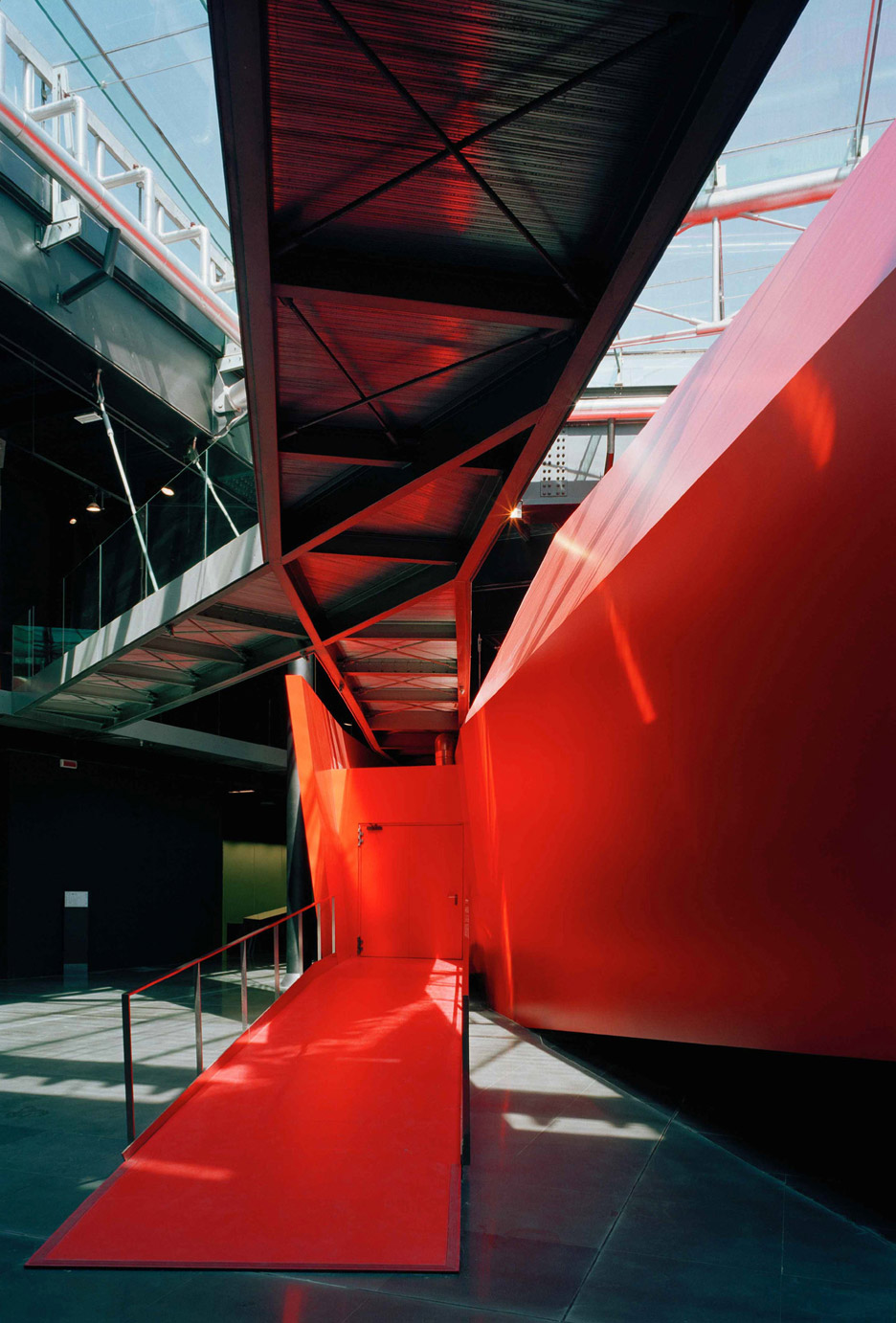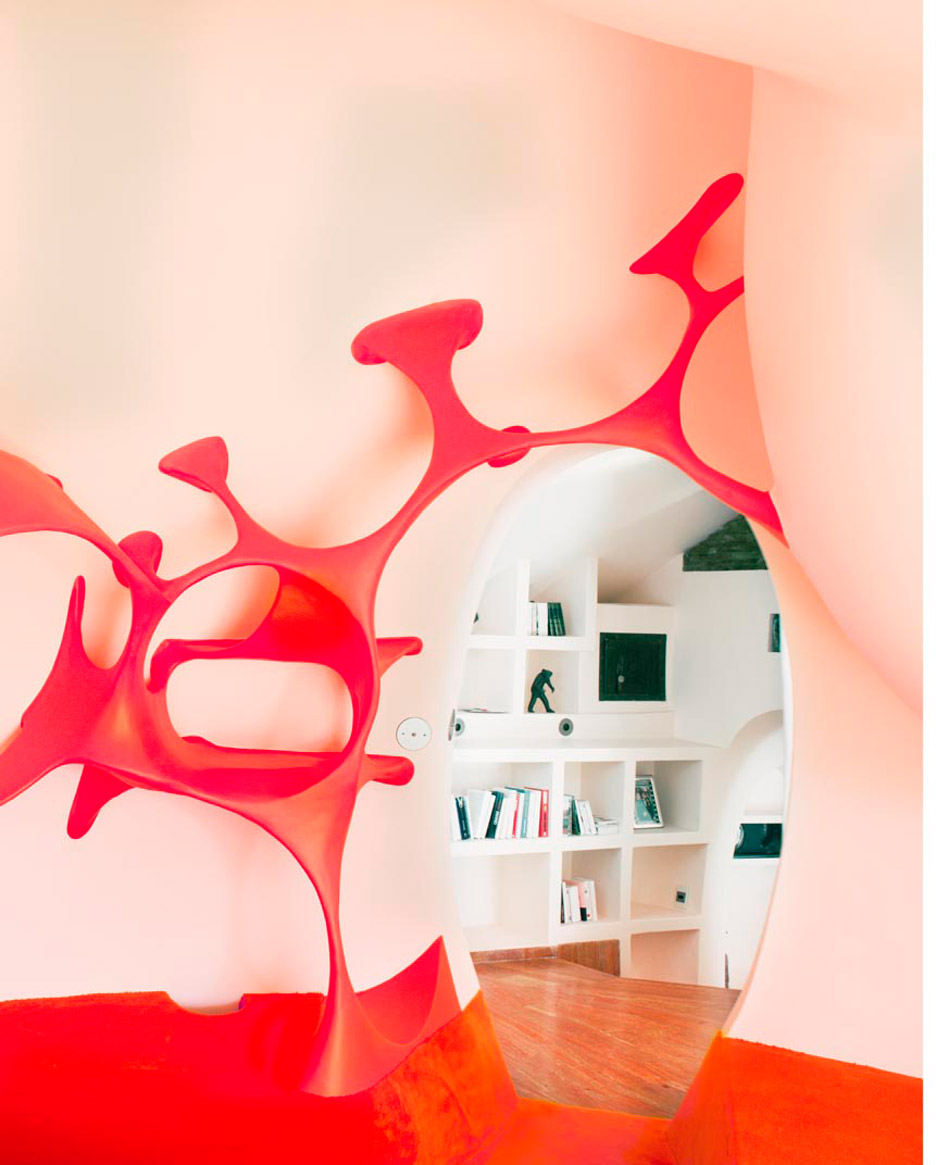Odile Decq had been recommended to me by architects like Thom Mayne as being in the forefront of European architects—male or female—so I was very eager to hear her deliver the Arthur Rosenblatt lecture at the AIA last week.
Decq resembles a Goth Grace Slick. Her look—black teased hair, black clothing, black nails, huge black rings, black eye makeup, and lipstick—is something she may have arrived at long ago to appear strong, to stand out as tough.
Would I need to reference the physical attributes of a man the same way?
If he stood out like this: yes. Absolutely.
This is a presentation as much as anything she says.
I ask her if she has designed her own jewelry and clothing. ‘No,” she answers with a smile, “but why not”. She laughs when she tells us that she wants to design everything in her projects even if she loses money on it. Shades of Frank Lloyd Wright.
This is a woman, a person, for whom creating a whole environment is what she is all about. An atrium with a winding ramp also reminds of Wright. A Barcelona building has Gaudi in it. She invokes the great mid century designer Pierre Paulin in her designs for chairs. She does not ignore history but she is surely the antithesis of classic and conformist.
She loves black. Recently she has also been loving red.
Other than that there is not much else in her palette. Oh, ok, white.
Despite the black, she has a sense of humor, and is charming and funny in delivering an anecdote.
Exteriors are fenestrated. Staircases have glass siding. She wants to be open to the world—and vice versa.
“We need architecture to help people live better,” she says.
Her husband and partner died in a car crash two decades ago—a tragic, defining time for her. Yet, finally after many years of the firm still being referred to by their joint names, in frustration, she took sole title in 2013. Her work is everything to her, She does not take vacations.
She was also frustrated with the institutions where she was teaching so she opened her own architecture school, Confluence, which depends on short term faculty workshops rather than semester long commitments. The enrollment is still small, but she seems undaunted.
Mirrors and shiny surfaces abound in her work. Having just seen the HBO doc which showed Jeff Koons opining on how important his shiny balls and surfaces are to reflect the world I can’t help but be discouraged for a moment.
Then I realize: Decq is not about reflecting the beau monde but rather the real world. It’s an entirely different energy.
I like most of all her restaurant for the Opera Garnier. It’s Courrege-ian, sixties, disco, but also very contemporary. She tells the story of how because of French landmark regulations, she was only allowed to alter the floor. Still, she found a great solution.
I don’t know of any projects of hers in the US but I can’t help but imagine that some ambitious client will soon be unafraid of collaborating with this dynamic woman.
